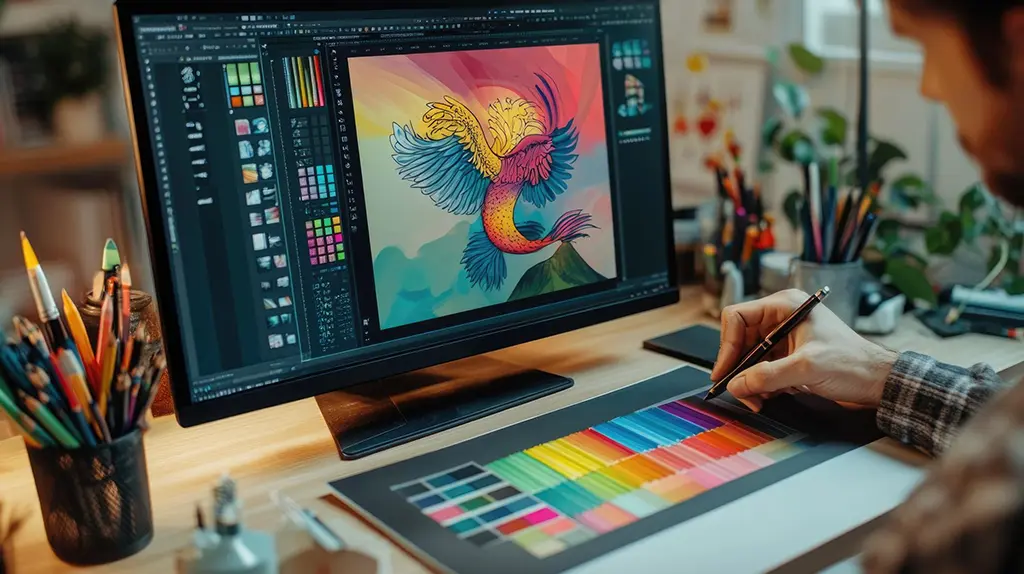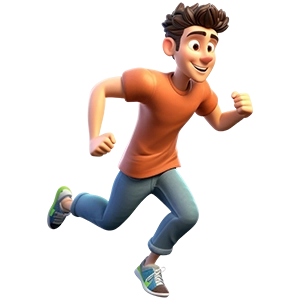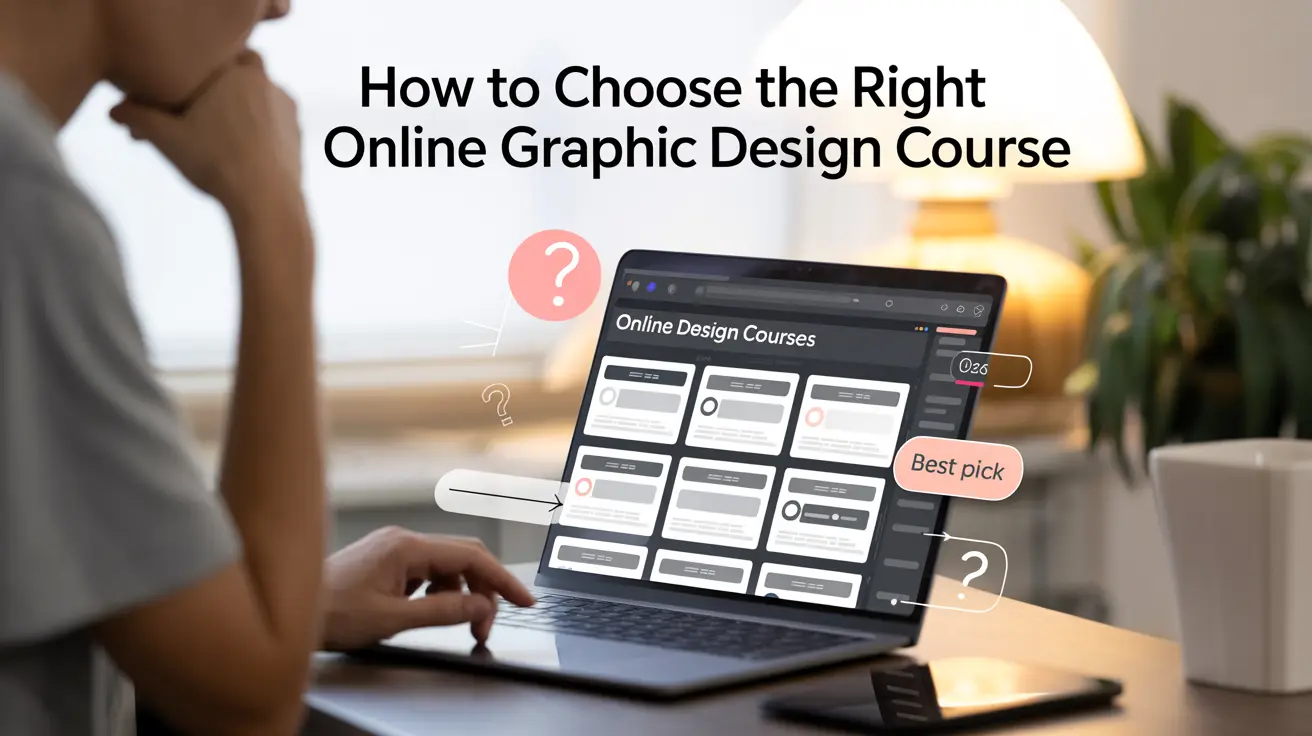In today’s fast-paced digital world, graphic design is an in-demand skill that opens doors to numerous career opportunities in marketing, branding, advertising, web development, and beyond. Whether you’re an aspiring designer or a complete novice, enrolling in an online graphic design course is a flexible and convenient way to build or upgrade your design skills. But with so many options available,
how do you choose the right online graphic design course?
This guide is crafted to help you navigate through the selection process. From understanding your learning goals to evaluating course content and instructor credentials, we cover everything you need to know. So, whether you’re looking for the best online graphic design course, or wondering how to select a design course online, this blog is your ultimate resource.
Before diving into the selection process, it’s essential to understand why online learning is a viable and often superior alternative to traditional classroom settings.
Flexibility and Accessibility
Online courses offer the convenience of learning at your own pace and from the comfort of your home. This is ideal for working professionals, students, or anyone with a busy schedule.
Cost-Effective Learning
Many online graphic design courses are affordable or even free, making them accessible to a broader audience. Paid versions usually come with added benefits such as certificates, one-on-one mentorship, and lifetime access to resources.
Wide Range of Options
There are numerous online graphic design courses for beginners that cover everything from basic design principles to advanced tools like Adobe Illustrator, Photoshop, and InDesign.
Choosing online learning enables you to explore a diverse range of design styles, projects, and software at your own pace.
💡 Pro Tip :
Online learning allows you to choose from a wide variety of course types, making it easier to tailor your education to your specific goals and availability.

Key Factors to Consider Before Enrolling
Choosing the right course can be overwhelming. Here are some graphic design course selection tips to help you make an informed decision.
Course Content and Curriculum
Make sure the course covers essential topics such as:
Basic design principles (color theory, typography, layout)
Design software (Photoshop, Illustrator, Canva, etc.)
Real-world projects and portfolio development
Instructor Credentials
Look for instructors with real-world experience, strong portfolios, and positive reviews. A qualified instructor can make complex topics easy to understand and keep you motivated throughout the course.
Course Format
Decide whether you prefer self-paced learning or a more structured, instructor-led format. Both have their pros and cons:
Self-paced: Flexible but requires discipline
Instructor-led: Structured but may have fixed deadlines
Duration and Time Commitment
Check the total duration of the course and how much time you need to invest weekly. Make sure it fits your schedule.
Certification and Accreditation
While not always necessary, a certificate from a reputed institution can add value to your resume.
💡 Pro Tip :
Check if the course includes lifetime access or downloadable materials, as these resources are invaluable for ongoing learning.
Understanding Your Goals and Learning Style
Before you jump into any course, it’s important to understand your learning objectives. This will help in finding the right graphic design course tailored to your needs.
Define Your Purpose
Are you learning as a hobby?
Do you want to freelance?
Are you planning a career switch?
Each goal requires a different level of commitment and depth of learning.
Know Your Learning Style
Visual learner? Choose courses with video tutorials and lots of design examples.
Hands-on learner? Look for project-based courses.
Need guidance? Opt for instructor-led programs with feedback.
These insights will help you select a design course online that matches your style and pace.
💡 Pro Tip :
Read the course outline carefully to see if it matches your preferred style of learning.
Evaluating Course Credentials and Reviews
Not all courses are created equal. Here’s how to separate the best from the rest when it comes to online graphic design course for beginners or more advanced learners.
Look for Accreditation
Courses affiliated with universities or recognized design institutions often carry more weight.
Read Student Reviews
Platforms like Udemy, Coursera, and LinkedIn Learning feature student reviews. Look for high ratings, positive feedback, and success stories.
Preview the Course
Many platforms allow you to preview a few lessons. Use this feature to assess teaching quality, course structure, and content relevance.
Community and Support
A good course often includes community forums, support groups, or even one-on-one mentorship to help you stay engaged.
💡 Pro Tip :
Use platforms like Trustpilot or Reddit to find unbiased reviews on your shortlisted courses.
Here’s a rundown of some top platforms offering the best online graphic design courses for beginners and professionals alike.
Coursera
- Courses from top universities like CalArts and the University of Colorado.
- Professional certificates available.
Udemy
Extensive library of courses.
Lifetime access to purchased courses.
VFX
- Integrated with your VFX profile.
- Courses by industry experts.
Skillshare
Ideal for creatives.
Bite-sized lessons with project-based learning.
All of these platforms offer a variety of options, helping you in choosing the right online graphic design course that suits your goals and budget.

💡 Pro Tip :
Mix platforms based on your learning stage. Use VFX, Udemy and Skill share as an online graphic design course for beginners, then progress to Coursera or VFX Learning.
Free vs. Paid Courses: What’s the Difference?
One common question is whether to go for free or paid courses. Here’s a breakdown.
Free Courses
- Great for testing the waters.
- Limited depth and usually no certification.
- Good for absolute beginners who want to understand the basics.
Paid Courses
- More structured and in-depth.
- Often include certification, project feedback, and community support.
- Better for serious learners aiming for a career or freelance opportunities.
Choosing between free and paid courses depends on your commitment level and professional goals.
💡 Pro Tip :
Begin with a free course to get familiar. If you enjoy it, invest in a paid version for structured learning and advanced modules.
Bonus Tips for Success in an Online Graphic Design Course
Enrolling in the right course is just the beginning. Here are some tips to make the most out of your learning experience.
Set a Learning Schedule
Allocate specific times during the week for studying and practicing.
Practice, Practice, Practice
The more you design, the better you get. Try recreating designs you admire or working on small freelance gigs.
Build a Portfolio
Showcase your work online using platforms like Behance or Dribbble.
Join Communities
Facebook groups, Reddit forums, and Discord servers are great places to get feedback and stay motivated.
Stay Updated
Design trends evolve. Subscribe to blogs, YouTube channels, and newsletters to keep learning.
💡 Pro Tip :
Treat each course project as if it were a client assignment. This mindset improves your professionalism and prepares you for real-world challenges.
Conclusion
Choosing the right graphic design course online can feel overwhelming, but with the right approach, it becomes an empowering first step toward a creative career. Consider your goals, learning style, and course content carefully. Whether you’re looking for the best online graphic design course or trying to figure out how to select a design course online, remember that the ideal course is the one that aligns with your unique aspirations and lifestyle. So take your time, do your research, and start building the creative future you’ve been dreaming of.
Frequently Asked Questions (FAQs)
Consider your goals, skill level, learning style, and preferred format. Use course previews, reviews, and comparisons to make the best choice. These graphic design course selection tips will help you succeed.
VFX, Udemy, Coursera (CalArts), and Skillshare all offer great online graphic design courses for beginners that are practical, affordable, and beginner-friendly.
Start with freelance gigs, internships, or volunteer projects. Build a portfolio that proves your design thinking and visual style.
Coursera, Udemy, Skillshare, VFX and Domestika each have unique strengths. Use trial lessons and reviews to decide which one helps you choose the right online graphic design course for your level and goals.
Know your objectives, match your learning style, read user reviews, preview content, and check for certification. These are proven graphic design course selection tips for every learner.
Want Professional Feedback?
These projects are ideal for personal growth, but they become truly powerful with expert critique, mentorship, and structured learning. That’s where a professional course makes the difference.
✅ Inside our 

Get feedback from real designers
Build industry-level projects
Learn tools like Photoshop, Illustrator, Figma, Firefly, and more
Learn how to package your projects into a real portfolio
– Turn your creativity into a career that’s future-proof.








